-
Posts
27 -
Joined
-
Last visited
Content Type
Profiles
Forums
Articles
Gallery
Downloads
Events
Posts posted by JoeThePro
-
-
-
6 minutes ago, Jasent said:
Went well
Looks good. Did you do anything to attach the castable to the elbow? I was considering a hose clamp around the elbow and some wire in the cast.
-
I actually did a 1 1/4” elbow, and an adapter to 3/4” in one side. I prefer this, the tee makes it weaker.
Edit: I put the whole elbow inside as it makes the casting easier, and is quite strong it seems.
Edit 2: it was a 1 1/4" elbow used. I cast it inside so that I didn't have to worry about it separating into 2 pieces.
-
-
23 hours ago, Nanafalke said:
Seems like something is jammed
I've had needle valves and regulators act like that before. Also be sure you aren't triggering the safety in the tank by cracking open the pressure too fast on start up.
-
Here’s 25. I had to pack in 23, then push 24 & 25 in with a nail set / punch. I like this configuration as they aren’t spilling over the edge, and I didn’t have to melt the sticks at all. These are new sticks too, all the other ones I had were old ones that I had inherited from my mother in law so they seemed stickier and may have been harder to pull out. No melting should mean that there’s nothing to burn out too.
Another thought I had when making this - I could wrap some reenforcement around the outside of the tee and clamp with a hose clamp for added structure, although these things seem tough. I actually dropped one from about 4’, with the frosty t burner attached and it survived.
-
On 10/28/2017 at 2:03 PM, Frosty said:
Looks good, probably need more orifices with such a small plenum, maybe 21 or 22 in the next one, they're easy to block off if you make too many.
So, what's your impression of using glue sticks? I didn't have nearly so much trouble getting crayons burnt out and heck with a healthy coat of Crisco for a release agent most pulled out cold. You still want to burn out the Lard-like veggy grease and what crayons don't come out I use half a dozen or so charcoal briquettes and just let it cook till it's cool, next day usually. I burn out in my old rivet forge with my brick "fire pot" customizers (fire bricks) arranged to keep the block on the fire.
I used the shop toaster oven to melt out the wax in the first block but it took a long time and I still had to do a charcoal burn out so I just skipped the oven step. Crisco works a treat to release the mold and crayons from the Kast-O-Lite. The stuff is made to STICK, if you don't get it off your mixing tools and putty knife before it sets you almost have to sand it off.
Frosty The Lucky.
The one that was fired up in the pictures was 22. My next cast will use a 1 1/4" tee, and a 1 1/4" to 3/4" reducer. That will give me a lot more room to add in nozzlets, so I'll max it out and plug them up to find the magic number.
I think the glue stick is a good idea, as we can get it to flex, allowing for the nozzle to "bloom" out like a flower. We will be able to build this in 10-15 minutes of work time too, so very low skill and low tool needs.
I would have been fine if I tried to melt out with a little bit of charcoal as you did; I just didn't have any, or an appropriate fire pot. For mixing the Kastolite, I just use hands covered in disposable gloves and a larger mixing cup. No tools to clean!
OH, I forgot to mention: these have zero roar. They are extremely quite.
-
Well burnout didn't go quite as planned - I only had another NARB to use to try to melt the adhesive out of there, so I put one in the middle of a makeshift forge, and fired one up and placed in one end, expecting cracks from the one in the middle. Some small ones did develop, and the insides didn't get as hot as I hoped (xxxx insulating refractory!), so the glue didn't burn as well as I wanted. After messing with that for awhile, I grabbed them both and put them on a baking sheet, with crumped foil "rings" to raise the flame face off of the baking sheet, and gave them 450° for about an hour, using a skewer to poke through all the holes to help it flow / drain after that hour. If you have a hood fan running and wipe off excess glue it doesn't stink too bad.
Ideally I think 350° for a few hours to melt out the adhesive (and help cure), followed by a coal or charcoal fire would be ideal. I'll be using something like that on my next experiments.
Next I went and placed them with flame faces touching at bottom, and 1/2" opening on top, and fired one up. Flame chases all the way through to the inlet of the other burner, and this helped clear out any remaining glue. After that I placed it back in my forge, and it runs well from 1 PSI to 20+, very stable even though it's pretty windy today. Attached are some pictures - it's difficult to see the blue flames from the nozzlets on the pictures, but it shows in person.
15psi without much time heating up, can see some of the blue jets:
15psi after heating for awhile (there's flame, but you can't really tell!):
1psi:
Immediately after testing, face still over 850 degrees (top of my thermal range):
-
16 minutes ago, Will42805 said:
Like what in particular. I'm not entirely sure as to the lifespan of these forges but I would like to make one that lasts quite a while and will exceed my needs for that duration of time.
#1 is that a forge created to be big enough for everything will likely fail at being really good at most things. The majority of forging is going to be performed over 7-8", and a forge closer to those sizes is going to be better in the long run.
-
As someone also getting started, I would advise that you start much smaller before building a larger forge. Think coffee can or disposable helium tank, as I’ve learned quite a bit in the construction so far that I’m glad hasn’t been learned on a larger scale yet.
-
34 minutes ago, Jasent said:
I wanna see it fired up

You made me curious. This is without burning it out, and without a forge, and on very low psi - like 1-2. And it’s a bit windy. And I need to tune this burner as it’s the first I’ve built
If I go higher I start smelling gas around the intake, so the NARB is restrictive right now.
-
NARB update! I pulled the glue sticks from cast #2 - 4 of them remained partially in. On this one I glued it to a tee, and used quite a bit more glue so I’m not surprised it had some “stick”. I demolded it and chipped a little away so I could see the duct tape and then inside the tee.
Then, since I was a bit impatient and excited, I stuck a MAP pro torch in it to burn out a bit of glue (not too bad of odor).
-
19 hours ago, Square Nail said:
In an effort to make the perfect Frosty burner, and because of my repeated failures at getting a tip perfectly centered in the "T" I decided to try and make a jig to make it fool proof and repeatable.
I like it. Want to send it to me when you’re done?
-
Oops just realized that the above post is in the wrong thread, it should be in the NARB thread. Oh well, at least I’m asking about a mixing tube length on a Frosty burner!
-
-
2 minutes ago, Theintegrator said:
I was thinking plistex or itc-100.
ITC is a waste of money compared to metrikote or plistex.
-
2 hours ago, Binesman said:
Looks very nice. I have 2 siggestions for you. First it looks like your propane hose is dragging down your feed tube (appears to have a very slight bend could be im crazy also) add a support arm to hold the weight of the hose. Second is to order a pint of metrikote or plistex from wayne and give the inside a coating to allow for greater efficiency.
Everything before the orifice can be bent at whatever angle needed, right? Good advice on the IR - more people also seem to be DIY'ing with zircopax and bentonite approximately 4:1 or 5:1 respectively I think too.
11 hours ago, Theintegrator said:Good looking forge. For the regulator, I would suggest trying to unscrew the line from the regulator, and add in a tee and a gauge for your own reference. That way you'll know how to get back to the same fire levels.
-
Ok here’s take 2. This time I used the 1” run x 3/4” tee that is used for the frosty t burner, taping off one of the 1” sides and placing that on the bottom. The thought is that I’ll open that up to have a look at the interior after burn out and then plug it when used.
This one also only has 19 glue sticks, which makes for a nicer bundle closer to the 1” size.
When casting its important to stuff some in between each glue stick with your finger before filling the sides or else it’s very difficult to get them to maintain any space.
4 hours ago, Frosty said:Kast-o-lite can be a PITA to mix, the aggregate is crushed so it keys and doesn't want to flow easily. I made up a vibrator to get it to flow between crayons. How'd you get yours to flow? Of course now we get to wait till you get the glue sticks cleaned out to see how it works. Thanks for the photo spread.
Frosty The Lucky.
I’m using the side of the blade on an oscillating tool to get it to flow some, but the main part is fingers to stuff it in he right spots.
-
That kastolite is some interesting stuff to mix. I just finished casting the first one and it turned out ok, I wanted to record the measurements for next time. To cast one of the quart mixing jars I needed about 36 oz of kastolite powder and about 12 oz of water. Both are by volume. I attached photos to this post, I hope they get reduced by the forum software or I’ll have to try to get that done in at the computer.
-
6 hours ago, Latticino said:
Love this idea, but have serious concerns regarding the refractory drying, shrinking and cracking before it can be slowly fired up to harden. Suggest you consider casting the refractory into a threaded flange with welded on mesh frame (see Giberson burner for example: http://www.joppaglass.com/burner/burnr1.html)
Definitely a possibility. I'm trying to make this as easy to accomplish as possible for a layman, so I'm going to allow the casting to set in a controlled & wet environment for quite awhile in hopes that it will have the best chance before a slow cure. I'm already planning on making different version if needed - playing the guinea pig here. Picked up a 100 pack of the mini glue sticks for $5 today after a coupon so I'm getting prepared for more! I'm also trying to document as much as possible so that it can be shared.
One idea I was kicking around would be to cast it in a small bucket or a quart paint can as a permanent enclosure, but the buckets were all galvanized and the paint cans had a teflon interior. This first one I'm going to leave out the Zircopax and bentonite as if I can get a good part from kastolite, glue sticks, and black pipe I think we'd really have a winner.
-
Had a chance to play around a little in the shop (and office) tonight. The little hot glue sticks seem to melt at a very low temp, so I think it will be easy to burn them out. The smell coming from them when torching them doesn't seem too offensive either, just a typical hot glue gun smell except stronger. I am hoping I'll be able to pull some or all of them out after casting though and won't have a ton to melt out. Here's the process so far:
- (22) of the .28 diameter x 4" glue sticks
- zip tie on both ends in a tight bundle
- torch the top of the bundle, melting about 1/8" or so, just to join them all together (10-20 seconds depending on your torch). You could just use a glue gun I suppose
- 1" x 3/4" black steel elbow, place it on top of the bundle while the glue is melted
For casting it, I'm thinking I'll cast it with all the glue sticks pointing up (attached photo that is upside-down for example). I'll also encase the elbow completely in the refractory - we will see if this makes it crack or not due to differential expansion. For the casting vessel, I'm thinking a quart mixing cup - make a hole in the side about an inch or two up for the 3/4" pipe, drop the elbow and glue sticks in, insert the pipe in the hole.
I'll keep them bundled as I pack the refractory down around the elbow and start of the glue sticks, then remove them and keep filling with refractory until I'm happy. Adjust each nozzlet / glue stick, thump it to remove bubbles, adjust again, etc. This will let me give them a little room around the ends of the nozzlet too for a taper effect.
-
Can someone advise if kaowool superwool plus (1832°F continuous, 2192° F classification rating) rigidified and covered with kastolite will hold up, or do I need to spend the extra for kaowool superwool HT (2102° F continuous, 2372°F classification rating)? I've found a good local deal on the 1", 8 pound kaowool superwool plus. They only have the HT in 2" thickness and I'd rather do multiple layers.
-
What about using the braided stainless steel propane hoses? I believe I've seen 25 ft. versions.
-
So I'm planning my NARB build, modeling it off of Frosty's progress. Zircopax plus from a local pottery supply and Kastolite 30 from Harbison Walker in KC. The area of difference that I'm looking into is on nozzelette sizing using low temp, mini, hot glue sticks (.27 x 4") and possibly making the whole assembly out of castible refractory by creating the interior void with lost parraffin wax. Right now it sounds crazy, but I think it could be a good method for others after it's documented. Any thoughts on if I should put chicken wire in the refractory, fiberglass strands, or ..?
The math on the number of nozzlettes looks like 21 ( .3125π*19 = .28π*x ) , but I think I'm going to bump that up to 24 and plug some if needed. Seems easier than trying to add additional holes later. I realize that this will depend quite a bit on the T-burner construction, but I think I'm going all the way and skipping the test builds here.
Anyone have any thoughts on this?

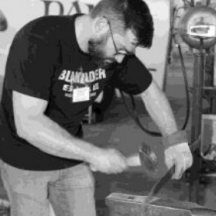
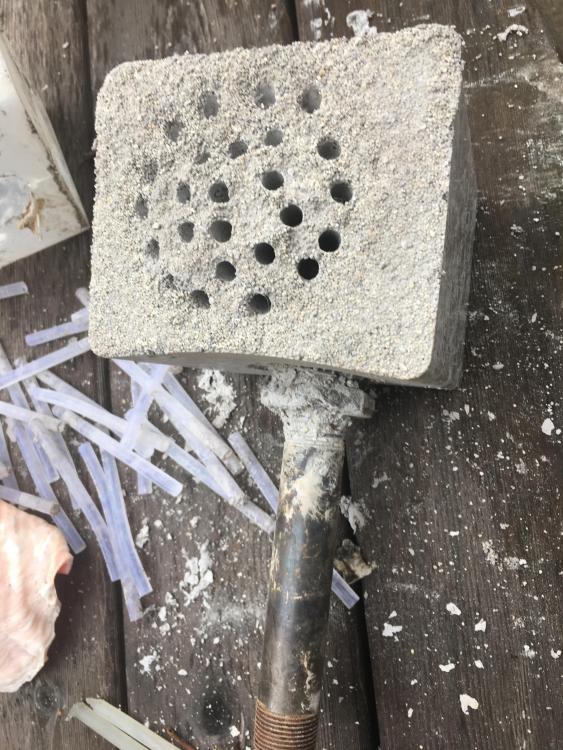
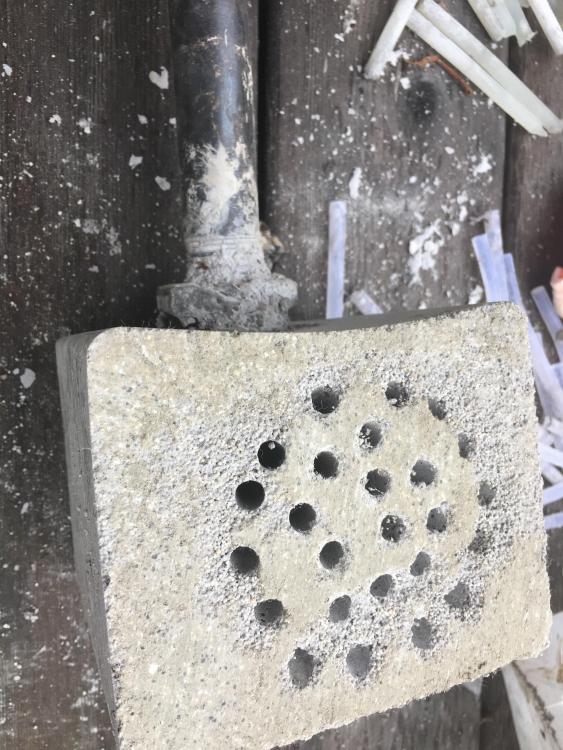
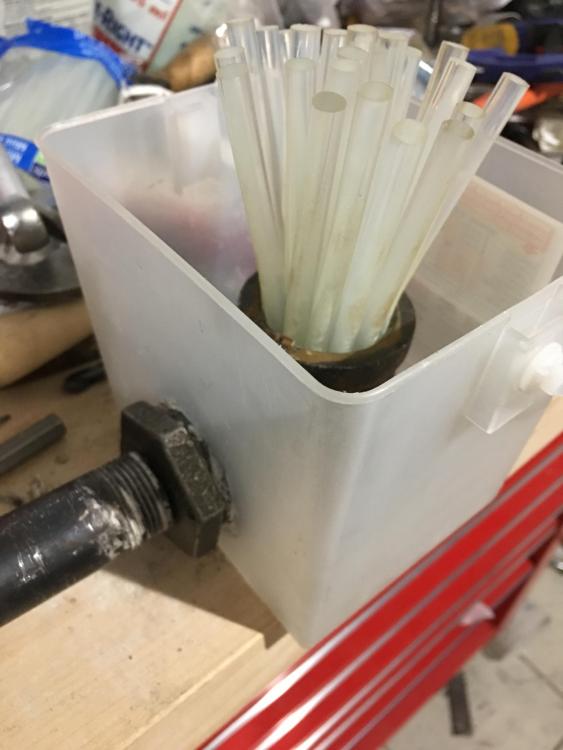
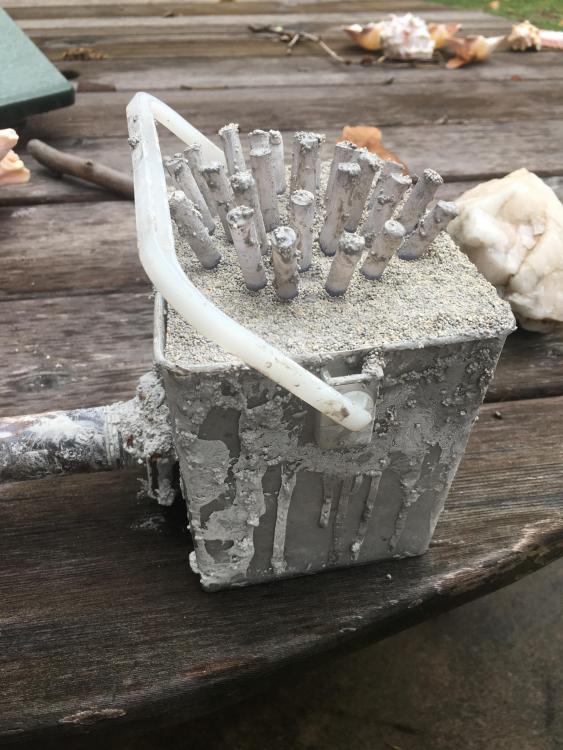
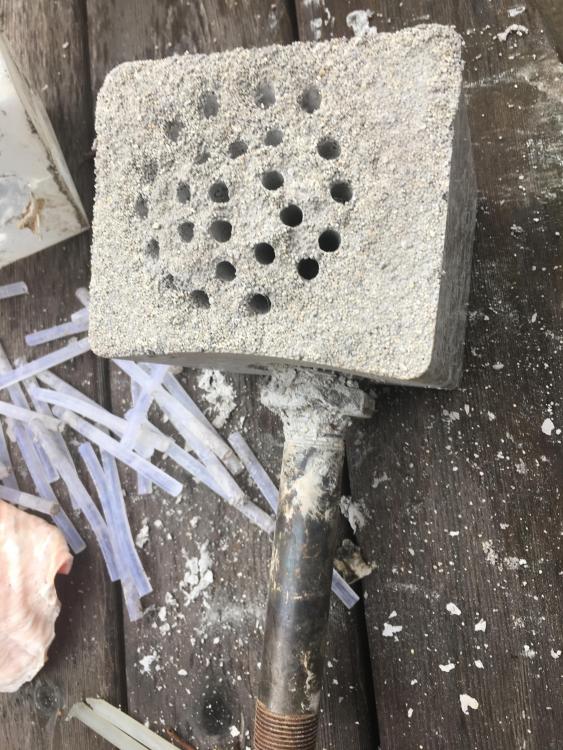
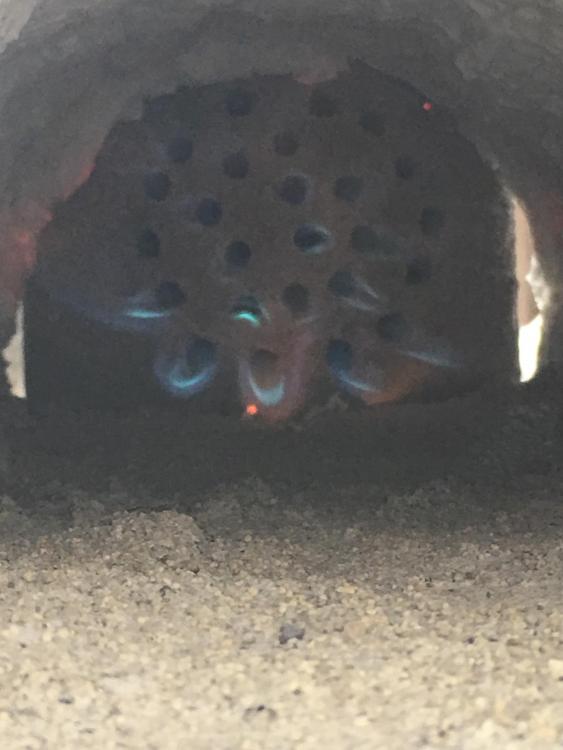
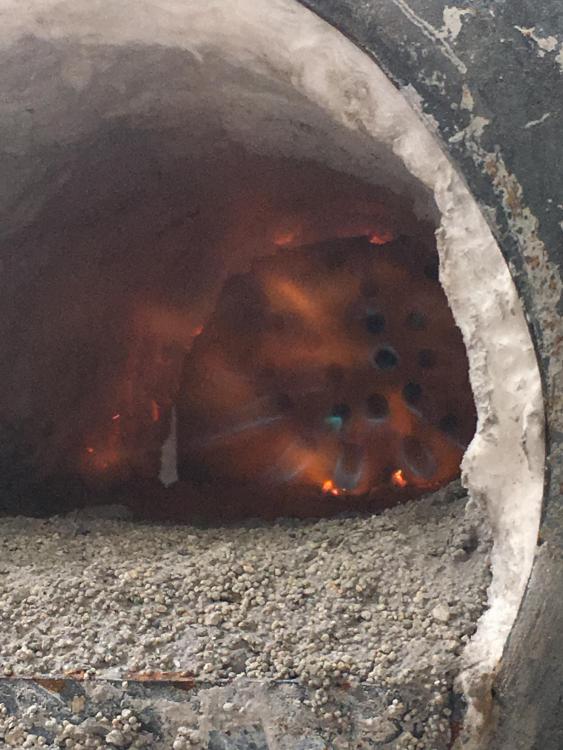
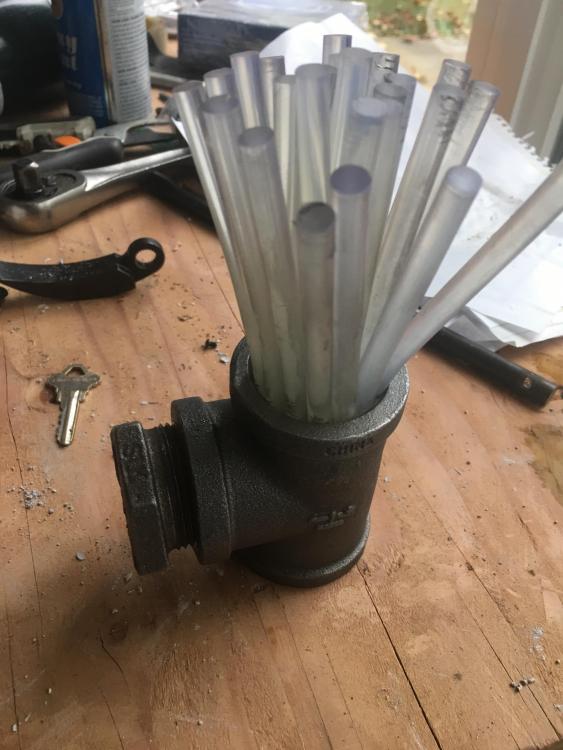
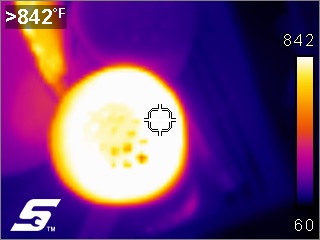
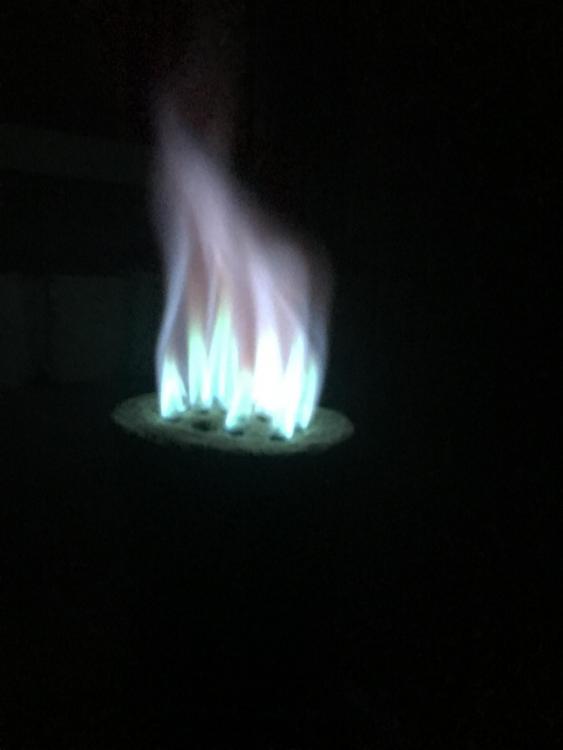
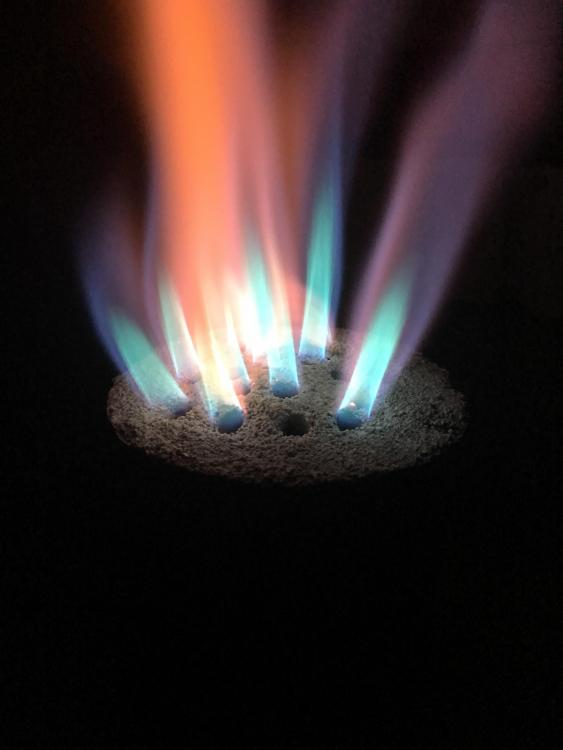
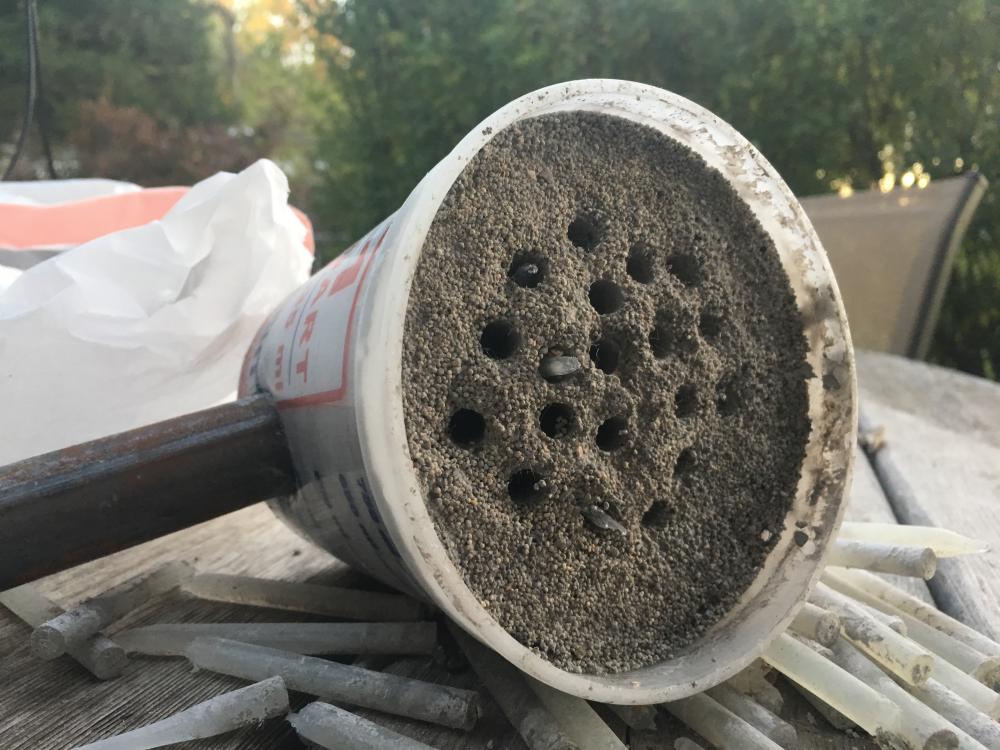
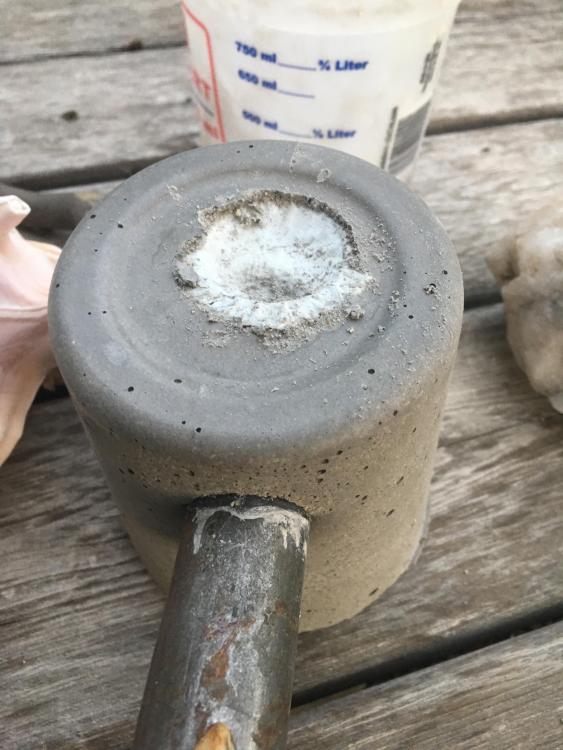
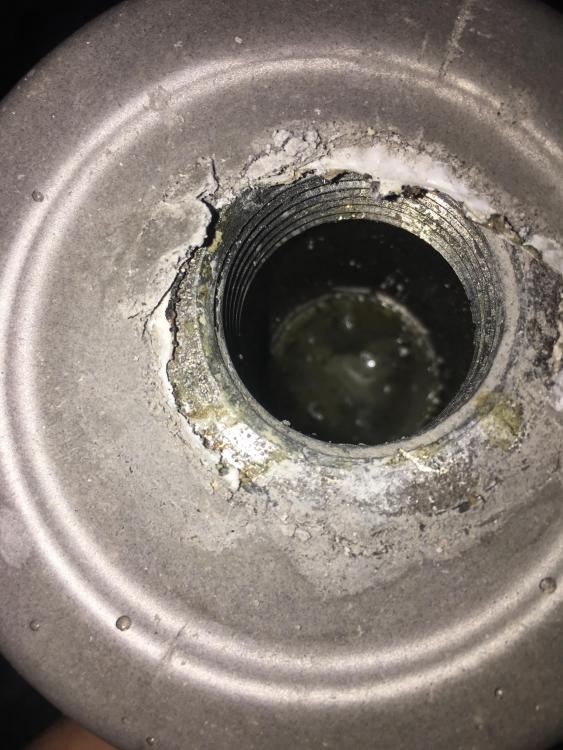
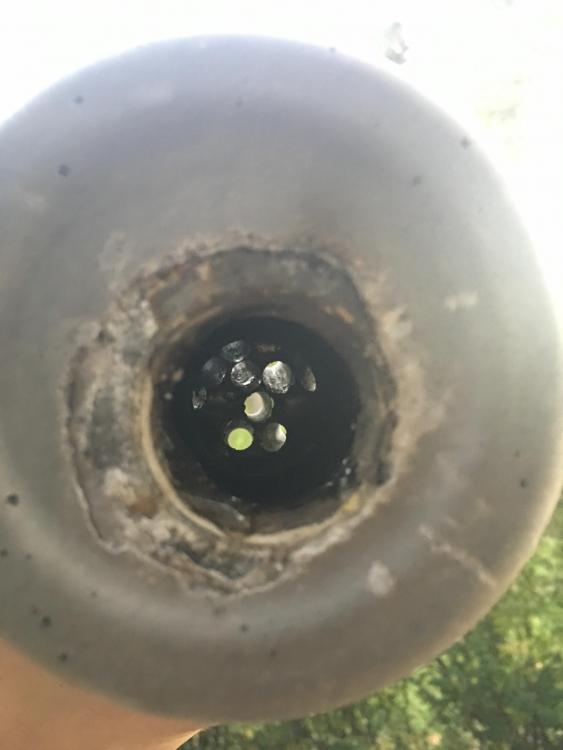
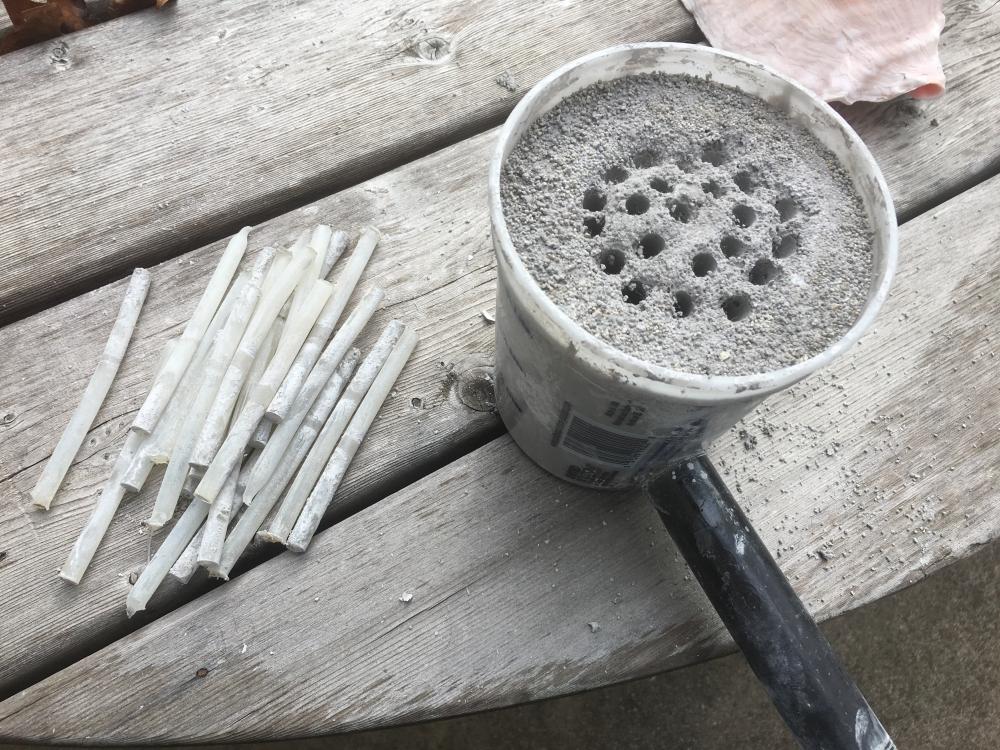
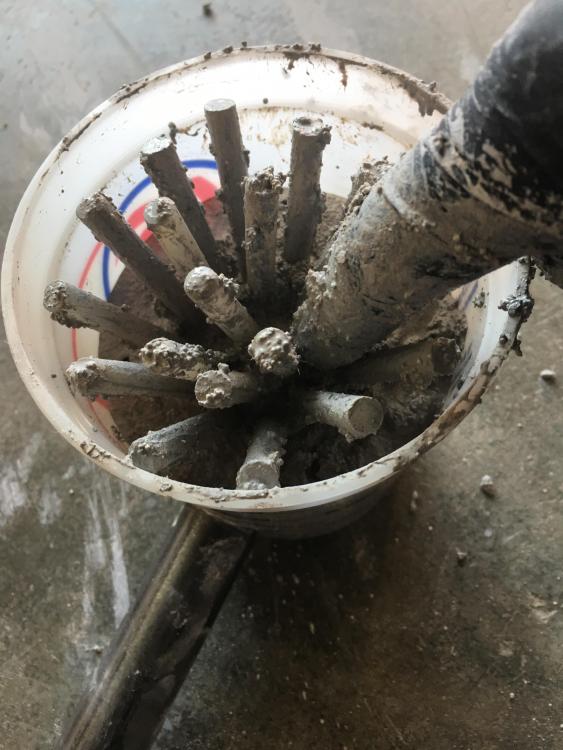
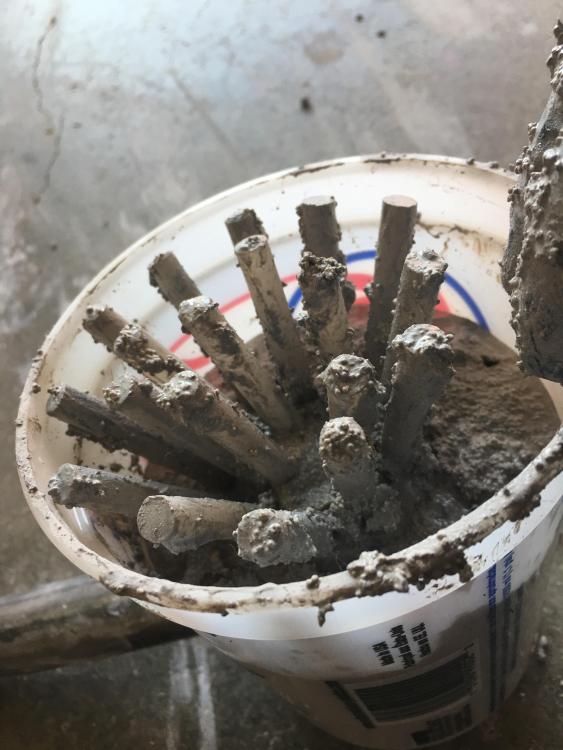
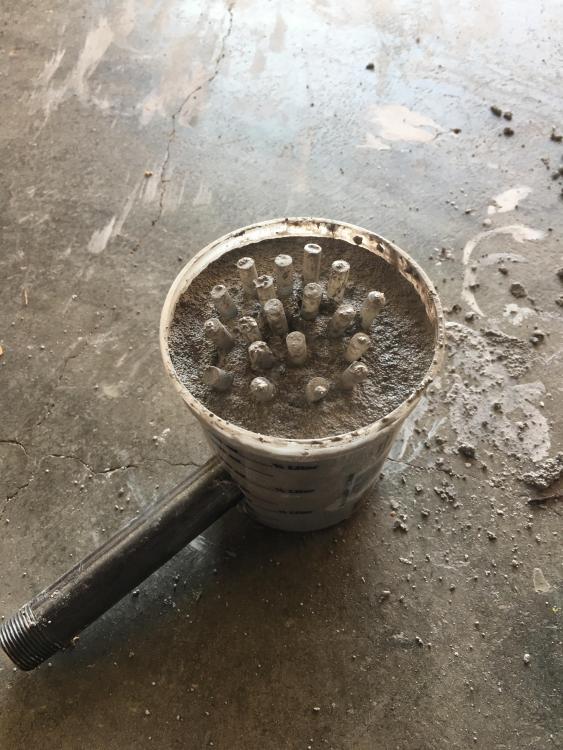
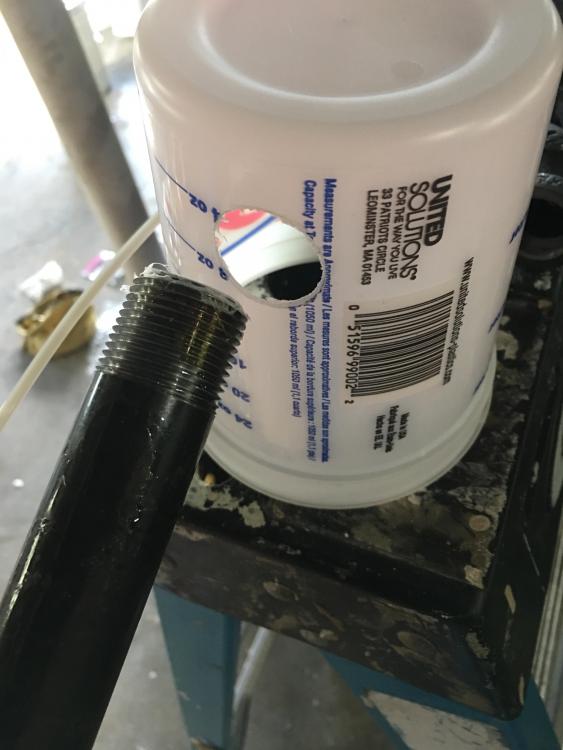
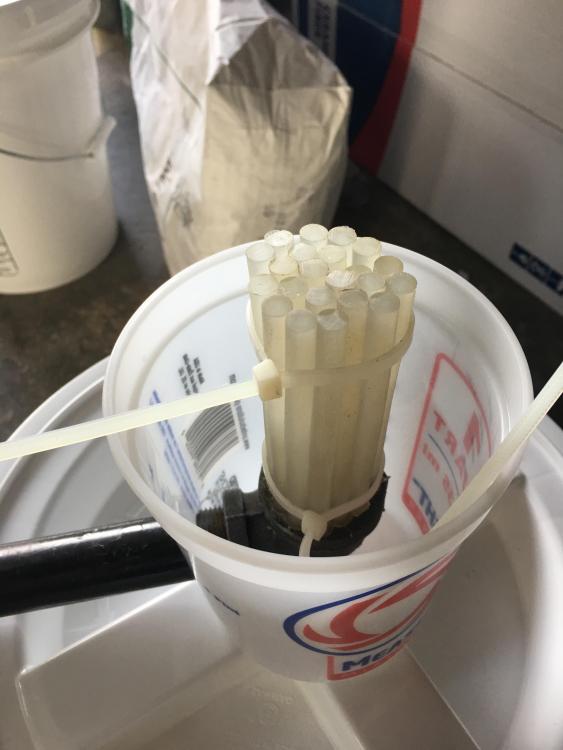
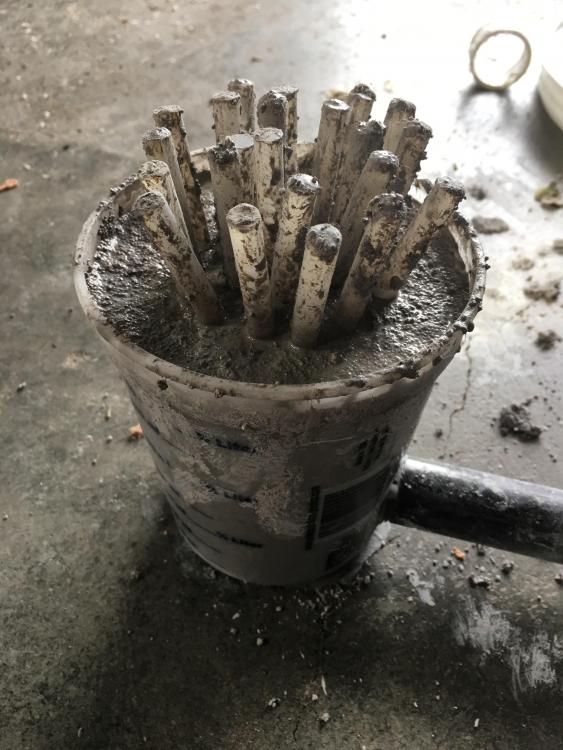
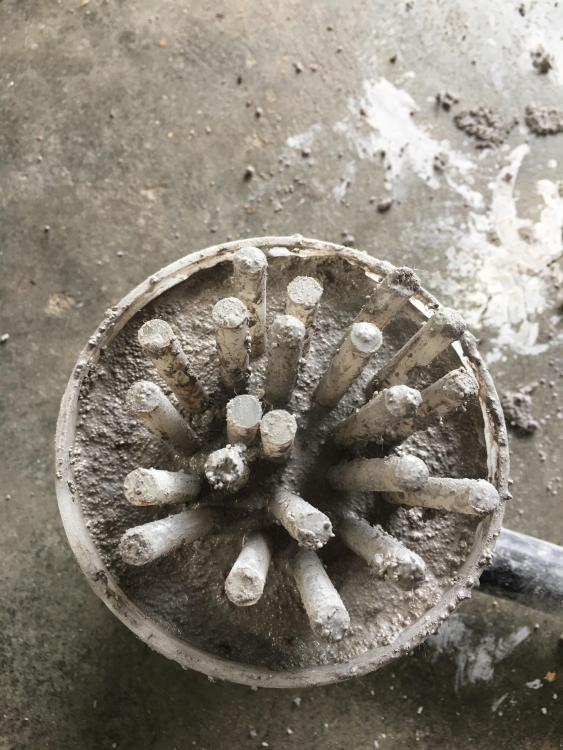
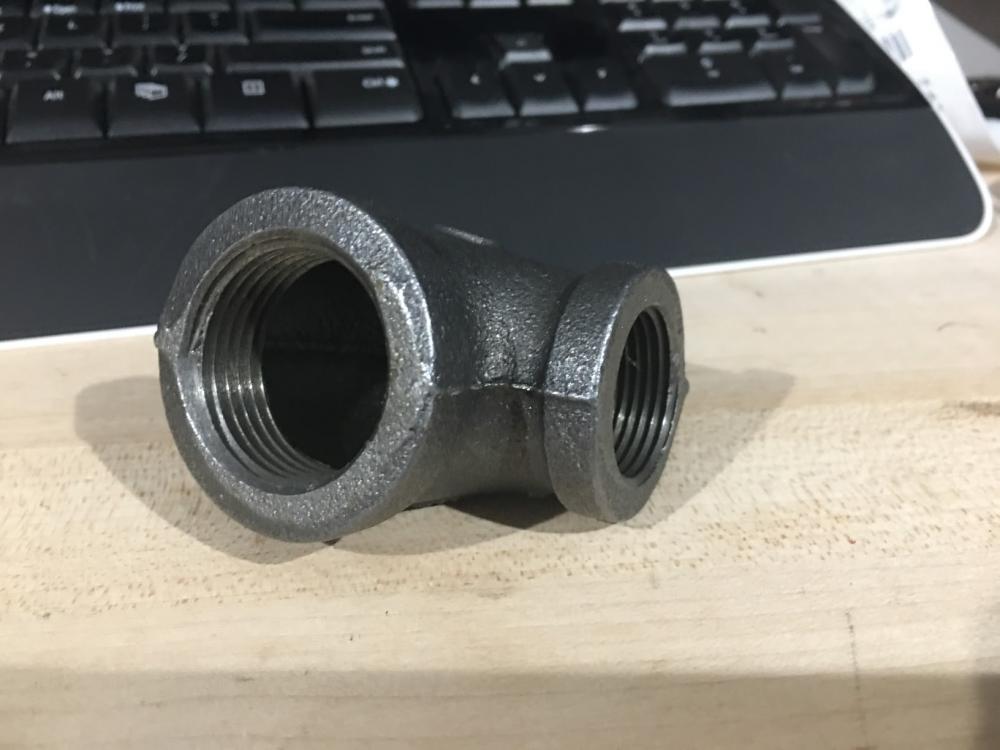
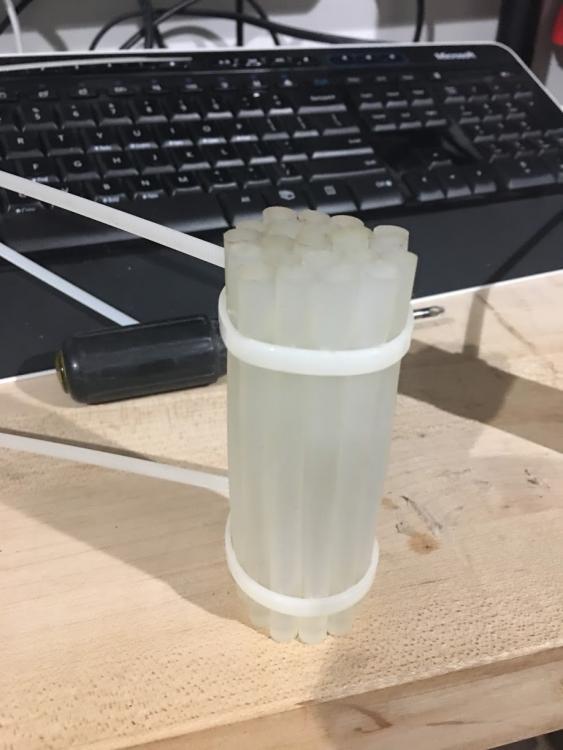
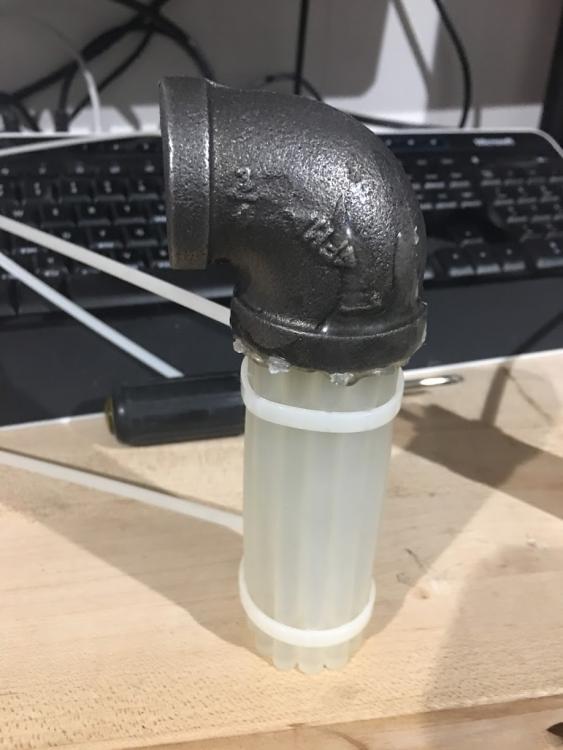
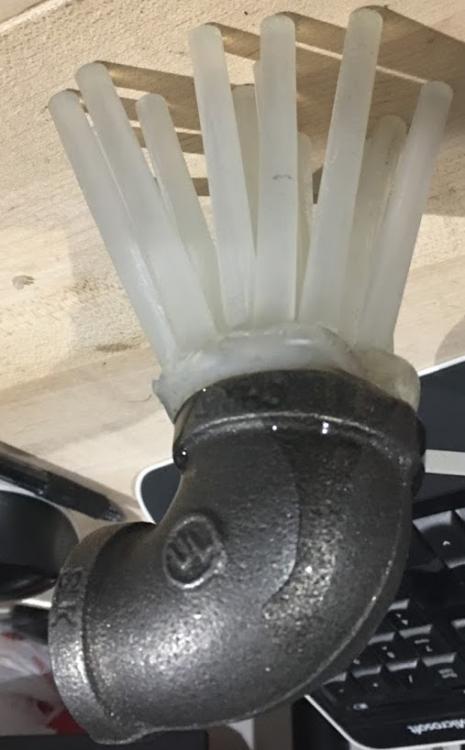
T Burner Illustrated Directions
in Gas Forges
Posted
I made one where I followed the directions exactly; it didn't work well because I tapped the fuel fitting at a 5-10 degree angle from shooting straight down the pipe. This is a good design because it spells it all out, just like a baking recipe. If you are going to tweak things (especially many things!), you aren't going to get the same result.